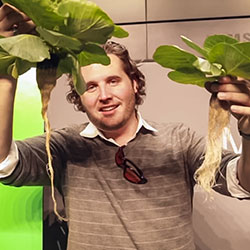Whenever I get overwhelmed with school and
my general responsibilities, I immediately jump to the conclusion that, “I
should quit school and save the bees.” (Does anyone else ever have this problem??) I know this sounds a little crazy, but
it’s like productive procrastination! If I were to “quit school” and run away
from my responsibilities to help a worthy cause, then it’s totally justified,
right? Well, I was definitely doing some “productive procrastination” and was
researching how to start saving the bees when I stumbled upon this: Seedles.
What are Seedles you may ask? They are, in the founders’ own
words, “rainbow bright balls of seed, compost, and clay.” Seedles are very
unique balls of wildflower seeds held together by clay and compostable matter.
Their purpose is to help restore the natural foliage and greenery that grow in
each region of the nation to help provide places of “work” for local
pollinators. Seedles had the mission to
grow 1 million wildflowers through the use, distribution, and planting of
Seedlesl; which was surpassed in 2014! By doing so, the movement and planting
of Seedles might just be the right step forward we need to begin saving the
bees.
I’m very serious when I say bees need our help. They have
been suffering from Colony Collapse Disorder for the past ten years, due, most
likely, to parasites, pesticides, and deforestation. With the help of Seedles,
the natural wildflowers that grow in your region can slowly be restored, which
will, in turn, help create natural jobs for the honeybees. These creations are
so unique and all you have to do to “plant” them is to simply throw them on the
ground – with some intention of spreading them out, of course. One Seedle can
grow enough wildflowers to cover one square foot of land. Because of this, as
long as you spread your Seedles out, they will help restore the natural
wildlife in your area.
As Kate Horowitz said on MentalFloss.com, “of 100 major American
crops, 70 are pollinated by bees; without them, we might not have apples,
almonds, carrots, or avocados” (MentalFloss.com). I cannot emphasize enough
just how important it is for us to do our part to help create an environment
where honeybees will thrive. [I’m really passionate about this topic, if you
can’t tell.]
The ever so creative innovation of Seedles, and their
effortless planting, reminds me of our lecture, in which a creative is
addressing a problem through a useful solution (Lecture, Morrison).
Additionally, the founders of Seedles approached a problem “in a creative way
to meet the needs of the community, therefore increasing the quality of life”
(McLean 226). If you don’t think bringing back wildflowers in a near effortless
and innovative design to save the bees is not creative, then I don’t know what
is.
So, maybe I will drop out of school, buy some Seedles, and
help save the bees… We’ll see how this semester goes.
Sources:
https://www.youtube.com/watch?v=MjsaZ3hbq14
McLean, Laird D. "Organizational Culture’s Influence on
Creativity and Innovation: A Review of the Literature and Implications for
Human Resource Development." Advances in Developing Human Resources 7.2
(2005): n.













